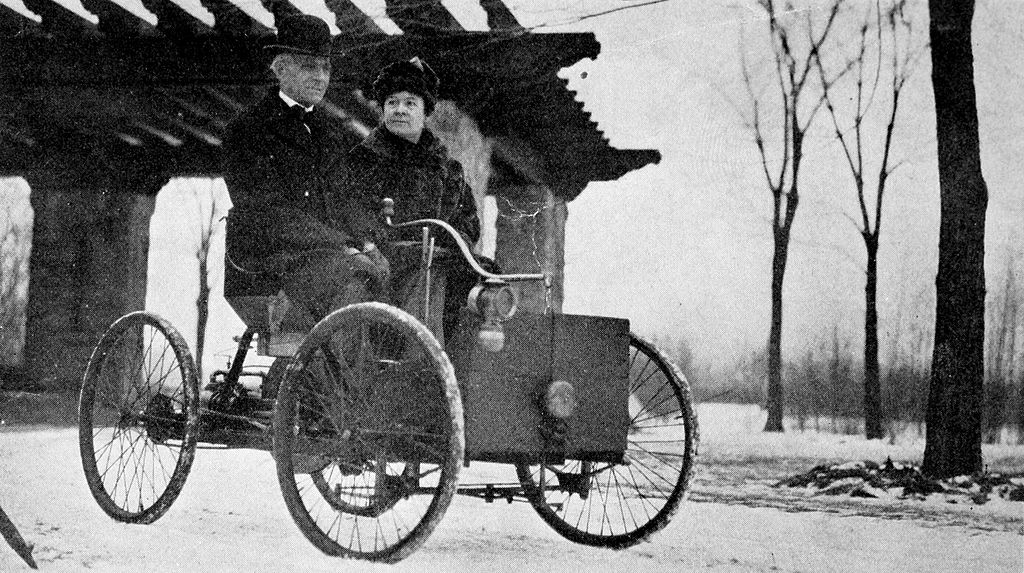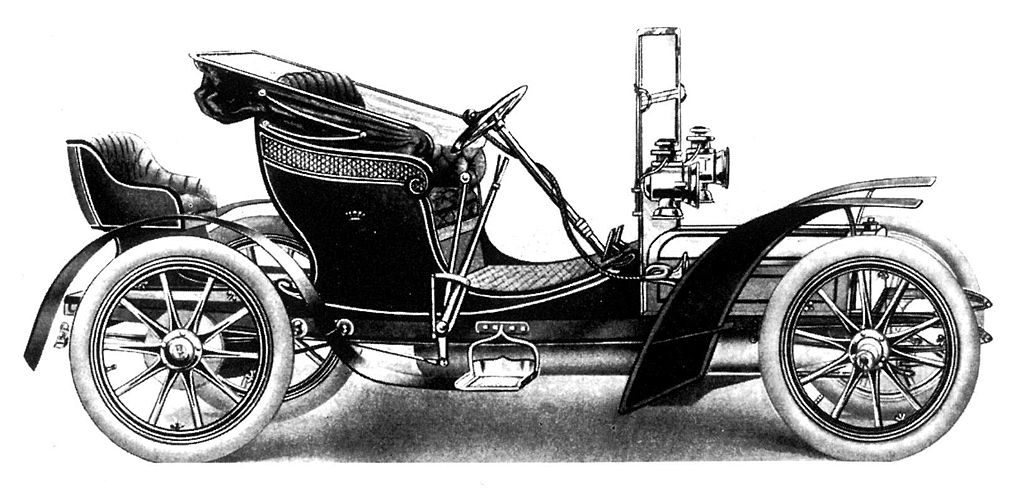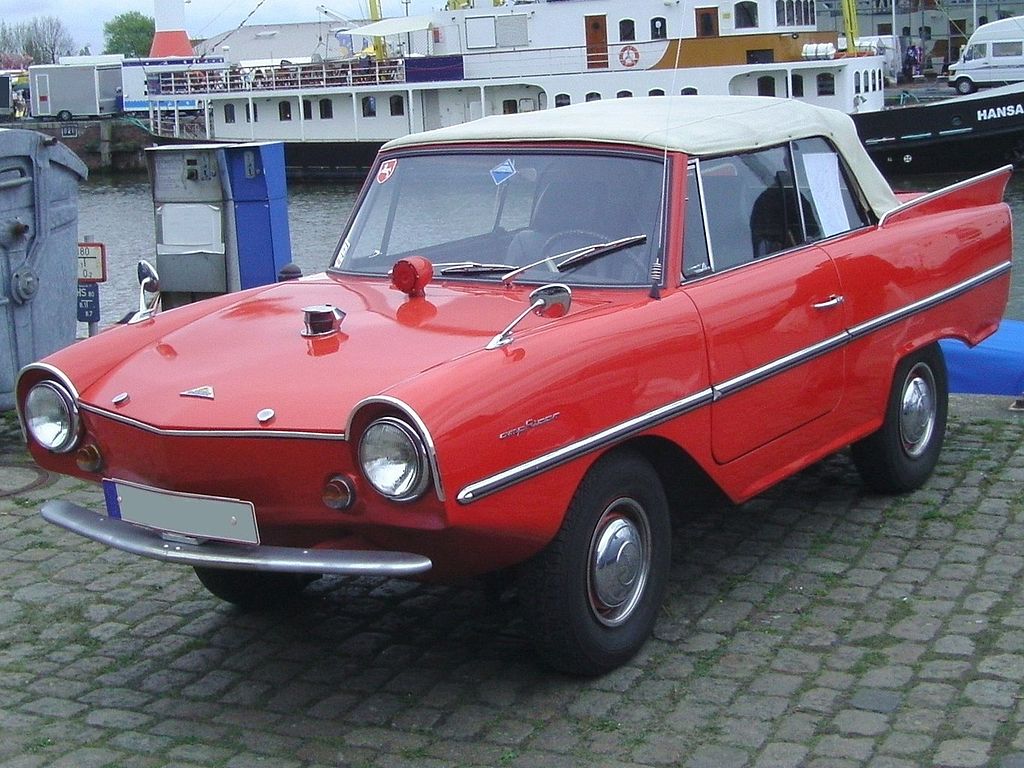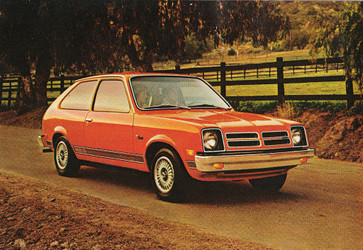Some car names are accurate descriptions
Posted by Dale Edward Johnson on Nov 21st 2022
The name of a car sometimes is a very precise description.
For example, Henry Ford was descriptive when he called his 1896 invention a Quadricycle. It used bicycle wheels and in some ways look like a four-wheeled bicycle.

The first mass produced car – the 1903 Curved Dash Olds – also had a descriptive name. As the name implies, it had a dash that was curved. A subsequent model introduced in 1906, which proved far less popular than the Curved Dash Olds, was called the Straight Dash Olds. You can imagine what it look like.
In 1905 a Rolls-Royce designed not to exceed the speed limit of 20 mph was called the Legalimit.

A front-wheel-drive car produced from 1910 to 1912 in Wisconsin was called the FWD. Dozens of firms added the words “electric,” “gas” or “steamer” after their model names to indicate the source of power, like the Stanley Steamer. In 1963, Chrysler brought out an experimental turbine-powered car and called at the Chrysler Turbine Car. These days, several automakers simply add words like “electric,” “hybrid” or “recharge” after the model name to designate the type of energy source. For example, the latest Genesis G80 with an electric drivetrain is called the Genesis Electrified G80.
Other automakers have used very descriptive names for elements other than style or power source. In 1929 Nash introduced a car with two ignition systems, and it was called the Nash Twin Ignition. A British automobile with no valves was called the Valveless. The Amphicar of the 1960s was also well-named, to describe how this amphibious car could go on both land and water.

Small cars often have descriptive names. In the early days of the auto industry, there were models called the Spartan and the Economy. When Olds brought out a small car in 1914 it was called the Baby Olds. A small car offered by the Moon Motor Car Company in 1927 was called the Petite. Also in 1927 the Marmon Motor Car Company introduced a small car and called it the Little Marmon. There was the Austin Bantam in the early 1930s, and in the late 1950s the Austin Mini was introduced – an ideal name for a miniature car. Maybe Chevrolet could have borrowed this approach and brought out the Chevy Mini instead of calling its small car of the 1970s the Vega. Actually, one name considered for the Vega was the GMini - a clever play on the corporate name as well as being highly descriptive. There was the MG Midget, which was, well, a midget MG. Nissan’s smallest car was called a Micra. Nissan stuck with this descriptive approach when it brought out a large model and called it the Maxima. All of these names make it very clear what these vehicles look like.
When the Big Three automakers introduced their compacts for the 1960 model year they all used names that in no way indicated they were small, economical cars. They were called the Chevrolet Corvair, Ford Falcon and Plymouth Valiant. The Chev Basic, Ford Spartan or Plymouth Economy would have been far more descriptive – but perhaps not as interesting.
When Chevrolet brought out a small car for the 1976 model year, it was named simply the Chevette. Anyone would know this was a small Chevy, because the “ette” ending is often used to indicate something is small – like a roomette on a train, or a kitchenette, or a cigarette. However, there was never a Fordette or Dodgette.

During the gas crunch of the 1970s some special high-mileage cars got special names to reflect that they could go plenty of miles on a gallon of gas, like the Pinto MPG or the Mazda Mizer.
In the 1980s Chrysler, teetering on the brink of bankruptcy, brought out the Plymouth Reliant – a name that conjures up images of reliance and durability. With the sad state of the economy at the time it was just the kind of car a lot of people were looking for.
The shape of a vehicle can also be reflected in the name. In the 1930s, Chrysler shattered the boxy styling approach by bringing out a very smooth and round vehicle, allowing the air to gently flow over the body – and that’s why Chrysler called it the Airflow. (The name has been brought back for an all-electric Chrysler concept vehicle.) Nissan had as model called the Cube, which was shaped largely like a cube.
They say you can’t judge a book by its cover – but sometimes you can indeed judge a car by its name.


